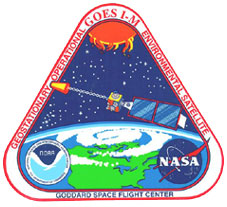|
 |
 |
 |
 |
The GOES I-M satellites are the primary element of U.S. weather monitoring and forecast operations and is a key component of NOAA's National Weather Service operations and modernization program. Spacecraft and ground-based systems work together to accomplish the mission of providing weather imagery and quantitative sounding data that form a continuous and reliable stream of environmental information used for weather forecasting and related services.
The GOES I-M series of satellites has provided significant improvements over previous GOES systems in weather imagery and atmospheric sounding information, particularly in the forecasting of life- and property-threatening severe storms.
The GOES I-M satellites introduced two new features. The first feature, flexible scan, offers small-scale area imaging that lets meteorologists take pictures of local weather trouble spots. This allows them to improve short-term forecasts over local areas. The second feature, simultaneous and independent imaging and sounding, is designed to allow weather forecasters to use multiple measurements of weather phenomena to increase the accuracy of their forecasts.
The first of the current series, GOES-I, was launched on April 13, 1994. After nearly 8 years of operational service, GOES-I was deorbited on April 1, 2003. The latest satellite in this series, GOES-M, was launched on July 22, 2001. |

|
| |
| MAIN SPACECRAFT DESIGN ELEMENTS |
| |
|
| Mission Life |
5 years, minimum |
| |
|
| Dimensions |
Main Body
2 meters (7 foot) cube
Deployed Length
27 meters (88 feet) |
| |
|
Weight
|
2100 kg (4600 lb)
|
| |
|
Orbit
Geosynchronous |
Altitude
36,000 km (22,000 mi)
Longitude
75W and 135W
Latitude
Equatorial, within 0.5 degrees |
| |
|
| Power |
1050 watts @ 42 volts, solar array; battery backup |
| |
|
| Launch Vehicle |
Atlas-I/Centaur (GOES I/ K)
Atlas-IIa/Centaur (GOES-L/M) |
| |
|
| Communications |
Imager and Sounder in GVAR format at 2.1 Mbits/sec |
| |
|
|
|
 |
|


